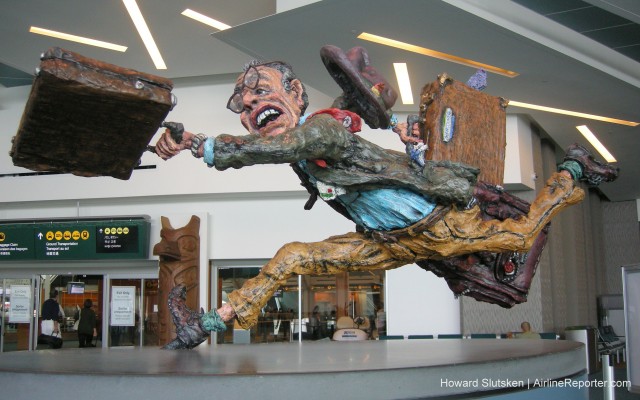
“The Flying Traveller” by Patrick Amiot & Brigitte Laurent at Vacouver’s airport
Consider these two scenarios:
Scenario One: an elite flyer with a major US air carrier files a claim with his preferred airline to have his elite status bag tag replaced, for it was inadvertently damaged during his last flight. It did remain attached to his checked luggage handle. Basically, it was bent. He is upset and advises this is the second such claim he has made within a month. He files a claim for his damages due to poor handling of his luggage.
Scenario Two: a not-so-frequent flyer is returning home on a recent flight. Once home, she starts to unpack her bag when she notices that her small, stuffed teddy bear (which she got several years prior after she survived open heart surgery and is now her ’œtravel companion’) has been damaged. It was split on the back seam, indicating someone may have inspected it for contraband. This little bear goes with her on all her trips, no matter how insignificant. In addition to the teddy bear being damaged, she notices that her luggage has been searched, as her well-folded and neatly-packed bag is now in disarray. She files a claim for damages.
Question; which claim will be settled? The answer will be at the end.
First, let’s dig a bit deeper into the world of airline baggage claims and talk how to get the best results when things go wrong.
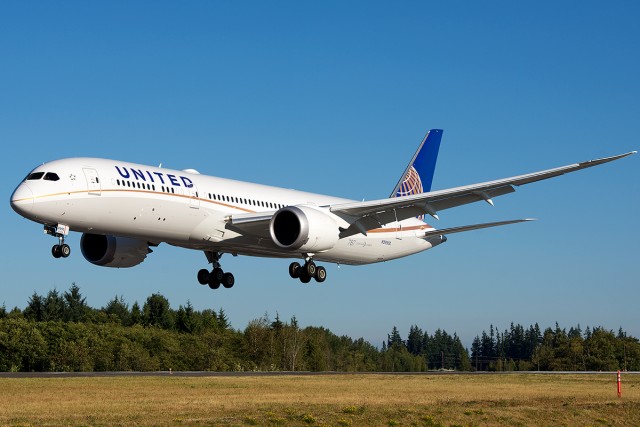
A United 787-9 touching down at Paine Field – Photo: Bernie Leighton | AirlineReporter
We’ve all seen the statistic; Airlines For America (a U.S. airline trade organization) is predicting 2.4 million passengers per day this summer in the 91-day period between June 1st of this year and August 31st. 332,000 of those enplanements are going to be international. Obscene!
Great for the industry. Yes. But be careful what you wish for.
At least, if you happen to be United Airlines. Things do not seem to be matching up with their peers over there? What’s going wrong?
Let’s start with the most recent on-time statistics for United for the month of June. 42% of flights in the United system departed without any delay. Amazing! Especially when their internal goal was 52%. Again, all this is fine in a vacuum- there are things like bad weather, known unknowns, and the like; except it trails its two largest competitors by a large margin.
Delta’s on-time performance for June was 66%, American’s was ~60%, and even Southwest was 53%. This is, of course, last month’s data. This month’s will have the blip of United’s router failure that knocked every flight into at least a two-hour delay on July 8.
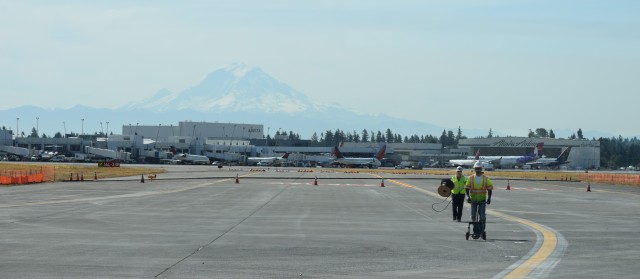
Taxiway Mike at Sea-Tac Airport is closed during reconstruction of runway 16C/34C – Photo: Lauren Darnielle | AirlineReporter
Last week, I had the opportunity to get a behind-the-scenes look at the construction currently in progress on Runway 16C/34C at Seattle-Tacoma International Airport (SEA, aka Sea-Tac). The center runway closed on May 4th for a complete reconstruction and is scheduled to re-open October 30th, so the project is already well underway.
At 9,426 feet in length, 16C/34C is Sea-Tac’s second-longest runway, consisting of over 4,000 concrete panels, each measuring 20 feet x 18.75 feet. Needless to say, reconstructing a runway is a huge undertaking, so there was plenty to see on our tour!
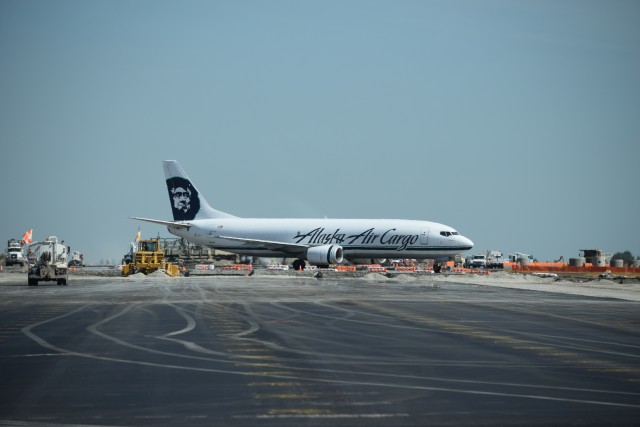
During construction, it is business as usual on the other two runways and the open taxiways – Photo: Lauren Darnielle | AirlineReporter
Originally built in 1969, 16C/34C is the oldest runway at Sea-Tac. It was designed to last 20 years, so it has more than done its duty. Upon completion of this reconstruction project, all three of Sea-Tac’s runways will have been constructed or rebuilt within the last seven years. 16R/34L (the hotly-contested ’œthird runway’) was built in 2008, and the longest runway, 16L/34R, was reconstructed in 2009.
’œWe continue to grow at a tremendous rate and the reconstruction of Sec-Tac’s center runway is vital to serve the demands of our region with progressive steps to improve safety, efficiency and environmental stewardship’, said Mike Ehl, Director, Aviation Operations. ’œThis will bring all of our runways up to modern standards for reliable use for decades to come.’

These will be the new Southwest ticket counters
William P. Hobby Airport (HOU) has been Houston’s secondary airport since 1969, when (now George Bush) Intercontinental Airport (IAH) became the city’s main facility. Although Hobby has a long history of different airlines operating there, in more recent times, Southwest has been the dominate carrier — by far.
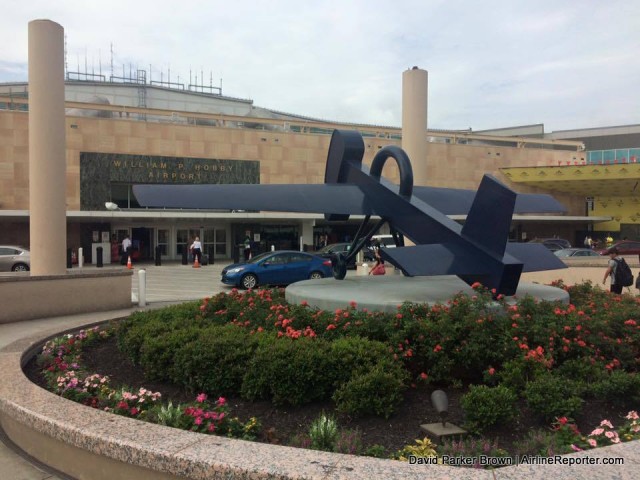
Part oil rig. Part airplane. All airport art outside Hobby’s main entrance.
Currently Southwest has about 85-90% of the flights at HOU, with more than 150 departures per day. The airline has been instrumental with a new expansion at Hobby and hopes to increase the number of flights, especially to international destinations.
During a recently trip through Houston, I was invited to take a behind the scenes look at the construction of a the international concourse at the airport.
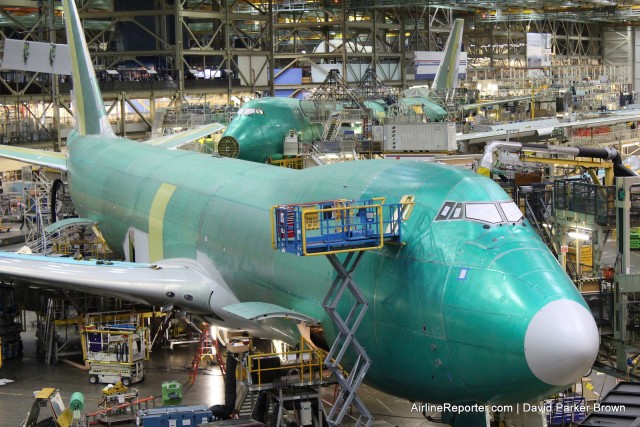
We have built something pretty good — how do we keep up that momentum?
July 23rd will be AirlineReporter’s seventh birthday. Thinking back on all the words, miles, people, and good times, it is amazing where we are today. We have a wonderful team of passionate, wonderful folks who have helped us grow in ways that I never knew imagined. I have loved (most) of it, and am so excited that you could be a part of this journey.
This enterprise started as a hobby and then morphed itself into a second job — one that really doesn’t pay. During all the changes and travel, I still held a full-time job (which did not even relate to aviation). Recently, I made a pretty big leap and took a new job, which I love, that is only part-time. This leaves me with some much-needed hours in the day to help AirlineReporter grow, but we could use your help.






